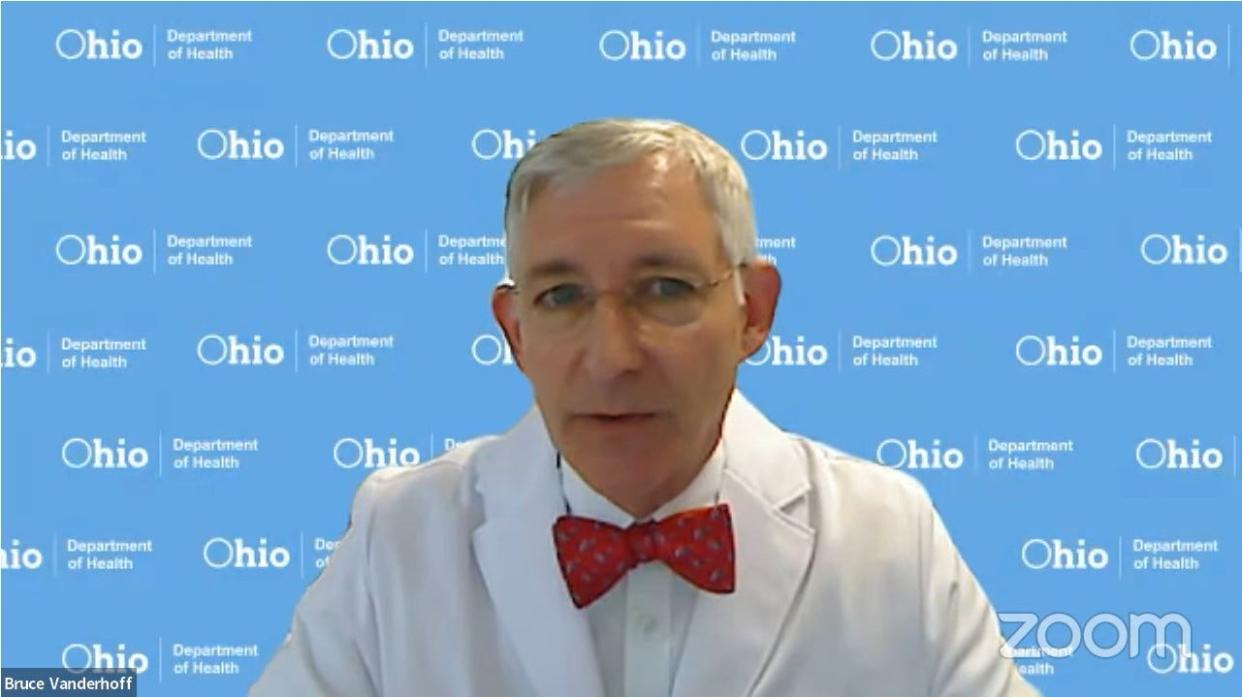How the end of the federal COVID-19 emergency affects vaccines, free tests in Ohio

After more than three years, the federal government's COVID-19 public health emergency ended Thursday, but Ohio's top public health official said it's not the time to stop being vigilant when it comes to slowing the virus.
Dr. Bruce Vanderhoff, director of the Ohio Department of Health, provided an update Thursday to local and statewide news outlets about what the end of the federal public health emergency means for Ohioans.
Here's what you need to know about cases, tests, vaccines, treatments and reporting requirements:
3 years later: Cincinnati health systems remove COVID-19 mask mandates for guests at hospitals
COVID-19 in Greater Cincinnati: The Health Collaborative's COVID-19 dashboard
COVID-19 is still an issue facing the state — but a less prevalent one
Although cases, hospitalizations and deaths declined in 2023 to the lowest levels since the pandemic started, COVID-19 continues to kill 40-50 Ohioans each week, Vanderhoff said.
"Nevertheless, the end of the public health emergency is another step along the path that we've been taking for some time now — a transition from dealing with COVID-19 as a pandemic to coping with it as more of an endemic disease," he said. "Overall, I do not foresee any immediate or dramatic changes in the (department's) ability to serve as a result of this shift."
The federal government will stop shipping free COVID-19 tests
Free COVID-19 tests will no longer be available through COVIDtests.gov, Vanderhoff said, and while some insurance companies won't cover over-the-counter tests, the Ohio Department of Health "has maintained a sizeable supply of free tests" available through local health departments, schools, long-term care facilities and other partners.
Tests given through health care providers and pharmacies might end up having some cost, depending on an individual's insurance coverage.
Medicaid: Free tests are available until Sept. 30, 2024; state Medicaid programs will decide whether to continue coverage after that.
Medicare: Enrollees will no longer receive free at-home tests, but lab tests are covered.
Private insurers: They are no longer required to pay for eight home tests a month. Consumers should check with their insurer about access because coverage varies by state and insurance company.
Uninsured: Testing may be available through pharmacies and community-based sites under a CDC program.
Ohio still has 'a sizeable supply' of COVID-19 vaccine
According to the Centers for Disease Control and Prevention, the end of the public health emergency "will not have a near-term impact on the availability of vaccine," Vanderhoff said, noting Ohio "has a sizeable supply of vaccine" to deploy to various parts of the state, as needed.
Providers of federally purchased COVID-19 vaccines are prohibited from charging patients for them, regardless of insurance, he said. Even after the federal supply runs out, most private insurance plans consider vaccines to be a preventative health service and therefore will cost nothing.
Medicaid: COVID-19 vaccinations will be covered without a co-pay or cost sharing through Sept. 30, 2024. Medicaid "will generally cover" vaccines that are recommended by the Advisory Committee on Immunization Practices, the U.S. Department of Health and Human Services said.
Medicare: Vaccines are covered under Medicare Part B without cost sharing.
Private insurers: COVID-19 vaccines recommended by the immunization committee are considered a preventative health service and should be fully covered without a co-pay when using an in-network provider.
Uninsured: Free vaccines may be available through the Bridge Program, announced by the U.S. Department of Health and Human Services on April 18, which maintains broad access to COVID-19 vaccines and treatment for uninsured Americans.
Out-of-pocket expenses for treatments might change
Out-of-pocket expenses for treatments might change, depending on insurance coverage, though Medicaid programs will continue to cover costs of treatments through Sept. 30, 2023, Vanderoff said. The Ohio Department of Health has a supply of therapeutic treatments to help offset those changes.
Telehealth services also will remain available without pre-pandemic restrictions, and telemedicine doctors will continue to be able to prescribe controlled substances such as buprenorphine and Adderall without an in-person medical appointment.
Ohio's COVID-19 dashboard will look a little different
Ohio's COVID-19 dashboard will include slightly less information and less frequent updates after the federal government's data reporting requirements expired, though the state will continue tracking COVID-19 cases and hospitalizations, Vanderhoff said.
"It's important to recognize, however, that many details regarding the impact of this public health emergency ending are really still unknown, but rest assured that throughout this transition, the Ohio Department of Health will continue to monitor the impact here in Ohio and will work with our partners to develop strategies to protect the health of Ohioans."
USA TODAY reporters Adrianna Rodriguez and Ken Alltucker contributed to this report.
This article originally appeared on Cincinnati Enquirer: Is COVID over? How federal emergency ending affects Ohio

